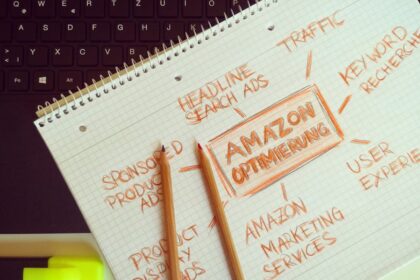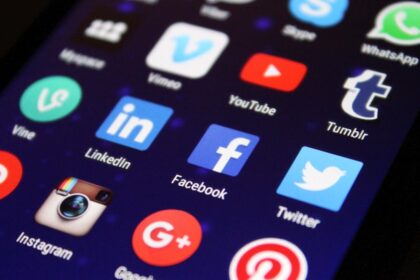The rapidly evolving landscape of digital advertising demands proactive strategies to ensure campaign longevity and sustained performance. YouTube, as the world’s second-largest search engine and a dominant video consumption platform, represents an indispensable channel for marketers. Future-proofing YouTube ad campaigns is not merely about adapting to change, but anticipating it, leveraging emerging technologies, and continuously refining methodologies to maintain a competitive edge. The core of this preparedness lies in embracing agility, deep audience understanding, data-driven optimization, and a relentless commitment to creative innovation, all while navigating an increasingly privacy-centric environment.
Embracing the Dynamic YouTube Ecosystem
Staying ahead in YouTube ads necessitates a profound understanding of the platform’s continuous evolution. Consumer viewing habits are in constant flux, influenced by device proliferation, content format innovations, and shifting attention spans. The rise of short-form video, spearheaded by platforms like TikTok and mirrored by YouTube Shorts, has fundamentally reshaped content consumption patterns. Simultaneously, the explosion of Connected TV (CTV) viewing has blurred the lines between linear television and digital video, offering new avenues for advertisers to reach large, engaged audiences in living room environments. Understanding these macro trends is the foundational step in future-proofing. Marketers must move beyond a desktop-first or even mobile-first mentality to an “every-screen” strategy, ensuring ads are optimized for an array of devices, from smartphones and tablets to smart TVs and gaming consoles. This multi-device reality impacts everything from creative aspect ratios to call-to-action visibility. Furthermore, the increasing sophistication of AI and Machine Learning (ML) integrated into YouTube’s ad platform profoundly influences how campaigns are targeted, optimized, and measured. Leveraging these automated capabilities effectively becomes paramount, shifting the focus from manual micro-management to strategic oversight and data interpretation.
Proactive Data Privacy and First-Party Data Utilization
The deprecation of third-party cookies and heightened global data privacy regulations (e.g., GDPR, CCPA) represent one of the most significant shifts impacting digital advertising. Future-proofing YouTube campaigns demands a robust strategy centered on first-party data. Advertisers must actively collect, organize, and activate their own customer data to maintain precise targeting capabilities and accurate measurement. This involves building comprehensive customer databases, leveraging CRM systems, and utilizing consent management platforms to ensure compliance. For YouTube ads, this translates directly into optimizing Customer Match lists for audience targeting and exclusion. Instead of relying solely on broad third-party segments, campaigns should increasingly focus on re-engaging existing customers, cross-selling, or up-selling based on explicit purchase history or website interactions.
Beyond direct customer data, expanding the use of Google’s Privacy Sandbox initiatives and similar privacy-preserving technologies will be crucial. While still evolving, these frameworks aim to facilitate interest-based advertising without individual user identification. Advertisers should closely monitor developments in this space and participate in testing where possible. Understanding the nuances of “Enhanced Conversions” and “Consent Mode” within Google Ads is no longer optional; these features provide ways to recover lost conversion data and adjust measurement based on user consent, crucial for maintaining accurate performance insights in a privacy-first world. The emphasis shifts from individual-level tracking to aggregated, privacy-preserving signals, requiring a fundamental rethink of attribution and measurement models.
Advanced Audience Targeting in a Post-Cookie Era
With the diminishing reliance on third-party cookies, advanced audience targeting on YouTube pivots to a combination of strong first-party data signals and Google’s own robust, privacy-centric audience solutions. Future-proof campaigns prioritize a multi-layered approach to reaching the right viewers.
1. Maximizing First-Party Data with Customer Match: Beyond basic re-engagement, sophisticated use of Customer Match involves segmenting lists based on customer lifecycle stages, purchase frequency, or specific product interests. Uploading hashed customer emails or phone numbers allows Google to match them with signed-in users on YouTube. This enables highly personalized messaging for existing customers, lookalike audience creation, and suppression of current customers from prospecting campaigns to reduce wasted spend. Regularly updating these lists and ensuring high match rates is essential.
2. Leveraging Google’s Intent and Behavior Signals: Google’s unique position with search data, YouTube viewing history, and app usage provides unparalleled insights into user intent and behavior, all while respecting privacy boundaries.
- Custom Intent Audiences: Instead of broad keywords, future-proof campaigns utilize long-tail, specific search terms, URLs of competitor products or relevant content, and even app names that indicate strong intent. For instance, a brand selling electric vehicles might target users searching for “electric SUV reviews,” “EV charging stations near me,” or visiting competitor car configurators. These signals are incredibly powerful for identifying users actively researching a product or service.
- Custom Affinity Audiences: Moving beyond standard affinity categories, these allow advertisers to define specific interests based on a combination of keywords, URLs, and apps that a target audience frequently engages with. This is ideal for reaching audiences with niche passions or lifestyles relevant to the brand, providing a deeper level of psychographic understanding than traditional demographics alone.
- In-Market Audiences: Google’s algorithm identifies users actively researching or planning to purchase specific products or services. These audiences are highly valuable for direct response campaigns. Future-proofing involves continuously refining the selection of in-market segments, combining them with other signals, and monitoring their performance closely as user behavior shifts.
3. Strategic Use of Lookalike Audiences: While lookalikes aren’t new, their importance intensifies. Creating lookalike audiences from high-value first-party customer lists (e.g., top 10% spenders, loyal subscribers) allows YouTube’s ML to find new users who share similar characteristics and online behaviors, significantly expanding reach with high relevance. Regularly refreshing the source lists and testing different lookalike expansions (e.g., 1% vs. 5% vs. 10%) can uncover new high-performing segments.
4. Contextual Targeting Refined: As privacy restrictions tighten, contextual targeting experiences a resurgence. Targeting specific YouTube channels, videos, or topics that align with your brand’s message or audience interests becomes more vital. This relies on the content itself being the signal, rather than the user’s personal data. Future-proof strategies will explore more granular contextual placements, leveraging brand safety tools to ensure ads appear alongside appropriate content, enhancing brand perception.
5. Exclusion Lists for Efficiency: Just as important as reaching the right audience is avoiding the wrong one. Comprehensive exclusion lists are critical:
- Converted Users: Prevent showing conversion ads to users who have already completed the desired action.
- Irrelevant Audiences: Exclude demographic segments or interest groups unlikely to convert.
- Low-Performing Placements: Continuously audit and exclude channels or videos that consistently underperform or lack brand suitability.
- Competitor Viewers (Strategic Exclusions): While tricky, excluding viewers of certain competitor content might be strategic if you’re only targeting specific niche markets, though often competitive conquesting is the goal.
By combining these audience strategies, advertisers can build a resilient targeting framework that adapts to privacy changes while maintaining precision and scale on YouTube.
Creative Excellence: The Unbreakable Backbone of YouTube Ads
In an increasingly automated and privacy-aware advertising world, creative quality emerges as the ultimate differentiator. No amount of sophisticated targeting or bidding strategy can compensate for a poor advertisement. Future-proofing YouTube campaigns demands a relentless focus on producing diverse, high-quality, and highly adaptable creative assets.
1. The Hook, Story, Offer (HSO) Framework, Evolved:
- Hook (First 5 Seconds): This remains critical, especially for skippable formats. Future-proof hooks are device-agnostic, grab attention visually and audibly without relying on explicit text, and immediately convey value or intrigue. They are often fast-paced, feature surprising elements, or pose a compelling question. For Shorts, the hook must be instant.
- Story (Middle Section): The narrative should be concise, problem-solution oriented, and emotionally resonant. Future-proof stories are often shorter, get to the point quickly, and demonstrate value visually. They consider different audience segments and tailor the “story” to resonate with their specific pain points or aspirations. User-generated content (UGC) or influencer-led narratives are increasingly effective here due to their authenticity.
- Offer (Final Seconds & CTA): The call-to-action (CTA) must be crystal clear, singular, and highly visible. Future-proof offers are integrated seamlessly into the video, appear on screen, and are verbally reinforced. They should prompt immediate action and direct viewers to optimized landing pages. Dynamic CTAs that change based on audience segment or past behavior will become more common.
2. Mastering Short-Form Video (YouTube Shorts Ads): The explosive growth of YouTube Shorts necessitates a “Shorts-first” creative mentality.
- Vertical Video Native: Design video specifically for 9:16 aspect ratio (vertical). Avoid simply repurposing horizontal ads.
- Immediate Engagement: The first second is paramount. Grab attention instantly, as users swipe quickly.
- Sound On, But Understandable Without: While sound is crucial on Shorts, make sure the core message is conveyed visually in case users are watching without audio. Use captions effectively.
- Punchy, Concise Messaging: Get straight to the point. Most Shorts ads are 15-60 seconds, but often the most impactful are under 30 seconds.
- Test and Iterate Rapidly: The volume of creative needed for Shorts is high, requiring continuous A/B testing of different hooks, visual styles, and offers.
3. Long-Form Storytelling for Deeper Engagement (In-Stream Ads): While short-form dominates, longer in-stream ads (30-60 seconds or more for non-skippable) still have a place for complex products, brand storytelling, or educational content. Future-proof long-form ads
- Offer Value: They aren’t just selling; they are informing, entertaining, or inspiring.
- Maintain Pacing: Even long ads need dynamic pacing to retain viewer attention.
- Strong Visuals: High production quality, compelling cinematography, and relevant imagery are critical.
- Clear Brand Integration: The brand should be seamlessly woven into the narrative, not just slapped on at the end.
4. A/B Testing Creative Variations Extensively: This is not a suggestion but a requirement. Future-proof campaigns run perpetual creative tests across all elements:
- Hooks: Different opening scenes, questions, or product reveals.
- Offers: Varying discounts, calls to action, or value propositions.
- Narrative Styles: Animation vs. live-action, testimonial vs. product demo.
- Pacing: Fast-cut vs. slower, more deliberate.
- Sound Design: Different background music, voiceovers, or sound effects.
- Aspect Ratios: Native vertical, square, horizontal.
- Landing Pages: Test landing page design and content alongside ad creative.
5. Personalization at Scale: Dynamic Creative Optimization (DCO): Leveraging DCO tools allows advertisers to dynamically assemble ad variations based on audience segments, real-time data, or specific user attributes. For example, a DCO system could pull different product images or localized offers based on the viewer’s location or browsing history, vastly increasing relevance and potential conversion rates without manual creation of hundreds of ad variants. This is the epitome of future-proof creative strategy – delivering hyper-relevant ads efficiently.
6. Sound Design and Its Importance: Sound is often overlooked but critical on YouTube. Future-proof ads
- Are designed for sound-on viewing: Engaging music, clear voiceovers, and impactful sound effects enhance the viewing experience.
- But also convey message with sound off: Use text overlays, clear visuals, and strong branding for sound-off viewing scenarios. This dual approach covers all bases.
7. Interactive Elements and Extensions: YouTube continues to roll out interactive features. Future-proof campaigns experiment with:
- Product Feeds: Integrate product feeds with video ads (especially TrueView for Shopping) to display relevant products alongside the video.
- Lead Forms: Directly capture leads within the ad unit itself, reducing friction.
- Site Link Extensions: Direct users to specific pages on your website from the ad.
- Polls and Quizzes (emerging): Potentially more interactive ad formats to increase engagement directly within the ad.
By treating creative as a continuous, data-informed development cycle, marketers can ensure their YouTube ads remain fresh, relevant, and effective, irrespective of platform changes or competitive pressures.
Leveraging AI and Machine Learning for Optimization and Scale
The strategic adoption of Artificial Intelligence and Machine Learning within Google Ads is perhaps the most critical component of future-proofing YouTube campaigns. These technologies are not merely supplementary tools; they are the core engine driving performance in an increasingly complex and data-rich environment. Advertisers must shift from manual optimization to intelligent oversight, leveraging automation while providing clear strategic direction.
1. Smart Bidding Strategies as a Cornerstone: Automated bidding strategies are powered by advanced ML algorithms that analyze vast amounts of data in real-time to optimize for specific conversion goals. Future-proof campaigns will maximize the use of:
- Target CPA (Cost Per Acquisition): Ideal for driving conversions within a set budget, the system learns which auctions are most likely to result in a conversion at your target cost.
- Maximize Conversions: Focuses on getting as many conversions as possible within your budget, without a specific CPA target. Useful when initially scaling or if CPA flexibility exists.
- Target ROAS (Return On Ad Spend): Crucial for e-commerce, this strategy optimizes for conversion value, aiming to achieve a specific return on ad spend. It’s particularly powerful when different products or conversions have varying values.
- Maximize Conversion Value: Similar to Max Conversions, but optimizes for total conversion value rather than just the number of conversions.
The key to successful smart bidding is providing the system with sufficient conversion data (at least 30 conversions per campaign per month for optimal performance) and allowing it time to learn. Avoid frequent changes to targets, which can reset the learning phase. Future-proof advertisers understand that while they set the strategic goal, the AI executes the micro-bidding decisions.
2. Performance Max Campaigns: A Unified AI-Driven Approach: Performance Max (PMax) campaigns represent Google’s most advanced automation offering, designed to maximize conversions across all Google channels, including YouTube, Display, Search, Discover, and Gmail. For YouTube advertisers, PMax is a powerful future-proofing tool because:
- Holistic Optimization: It leverages AI to find the best performing combinations of assets, audiences, and formats across various placements, often identifying conversion paths that traditional siloed campaigns might miss.
- Automated Asset Assembly: Advertisers provide a variety of creative assets (videos, images, headlines, descriptions), and PMax automatically generates and tests different ad variations, learning which combinations perform best for different audiences and placements on YouTube. This significantly reduces manual creative optimization efforts.
- Expanded Reach: PMax automatically extends reach to new, high-converting audiences that might not have been explicitly targeted.
- Simplified Management: While requiring high-quality inputs, PMax simplifies campaign management by consolidating efforts.
To future-proof with PMax, focus on:
- High-Quality Diverse Assets: Provide as many high-quality videos (different lengths, aspect ratios, messages), images, and text variations as possible. This gives the AI more options to test.
- Strong Audience Signals: Use your first-party data (Customer Match) and other audience lists (e.g., website visitors) as “audience signals” to guide the AI towards your desired customer base, rather than as strict targeting.
- Clear Conversion Goals: Ensure accurate conversion tracking and clear conversion value settings.
- Strategic Oversight: Monitor performance, identify underperforming asset groups, and refine audience signals over time.
3. Automated Asset Generation and Testing: Beyond PMax, Google is investing heavily in AI-powered tools for creative development and testing. This includes features that can:
- Suggest Ad Copy Variations: Based on your existing creative and landing page content.
- Generate Image/Video Variations: Potentially creating different cuts or versions from raw footage.
- Automated A/B Testing Frameworks: Streamline the process of testing multiple creative elements simultaneously and identifying winning variations.
Future-proof advertisers will embrace these tools to scale their creative output and testing velocity.
4. Predictive Analytics for Campaign Forecasting: AI/ML models are increasingly capable of predicting future campaign performance, audience behavior, and market trends. While not fully mainstream yet, future-proof strategies will leverage these predictive insights for:
- Budget Allocation: Forecasting which campaigns or channels will yield the highest ROI.
- Demand Planning: Anticipating peak seasons or shifts in consumer interest.
- Risk Mitigation: Identifying potential performance dips before they occur.
5. Audience Insights Powered by AI: Google’s analytics platforms, especially Google Analytics 4 (GA4), use ML to provide deeper insights into audience behavior, segment performance, and conversion paths. This allows advertisers to move beyond surface-level data to understand correlations, identify emerging trends, and uncover high-value customer segments for YouTube targeting.
6. Leveraging Google’s Recommendations Engine: The recommendations section within Google Ads is powered by AI, suggesting optimizations based on your account’s historical performance and broader industry trends. While not all recommendations are universally applicable, future-proof advertisers critically evaluate and test these suggestions, often finding valuable opportunities for improvement in bidding, budgeting, and targeting that might have been overlooked.
The essence of leveraging AI/ML for future-proofing is to view these technologies as strategic partners. They handle the computational heavy lifting and real-time optimization, freeing human marketers to focus on higher-level strategy, creative innovation, and interpreting nuanced performance insights.
Measurement and Attribution in a Post-Cookie World
Accurate measurement and attribution have always been challenging, but the erosion of third-party cookies and heightened privacy concerns have introduced new complexities. Future-proofing YouTube campaigns demands a fundamental shift in how advertisers track performance, attribute conversions, and understand true ROI. The emphasis moves from single-touch, individual-level tracking to privacy-preserving, modeled data and holistic business outcomes.
1. Shift to First-Party Data for Measurement:
- Enhanced Conversions: This feature allows advertisers to send hashed, first-party customer data (e.g., email addresses) to Google in a privacy-safe way. Google then uses this data to improve the accuracy of conversion tracking by matching it against signed-in Google users. This is critical for recovering conversion data that might otherwise be lost due to cookie restrictions. Implementing Enhanced Conversions should be a top priority.
- Google Tag Manager (GTM) and Server-Side Tagging: Moving to server-side tagging (e.g., through Google Tag Manager Server-Side) reduces browser-side limitations and provides greater control over data collection, enhancing measurement resilience against browser privacy features.
2. Conversion Modeling and Data-Driven Attribution: As direct user tracking becomes more challenging, Google’s machine learning models play a larger role in estimating conversions that cannot be directly observed.
- Conversion Modeling: Google uses aggregated, anonymized data and ML to fill gaps in conversion reporting, providing a more complete picture of performance. Advertisers must trust these models, understanding that perfection is unattainable in a privacy-first world, but statistical validity is key.
- Data-Driven Attribution (DDA): DDA models analyze all conversion paths and assign fractional credit to different touchpoints based on their contribution to the conversion, using Google’s ML. This moves beyond simplistic last-click attribution, providing a more accurate understanding of YouTube’s role in the customer journey, especially for brand awareness and consideration phases that lead to later conversions. Future-proof campaigns default to DDA.
3. Google Analytics 4 (GA4) Integration and Capabilities: GA4 is designed for the future of measurement, offering a unified view across websites and apps, and a more event-based data model.
- Event-Based Tracking: GA4 tracks user interactions as “events” rather than traditional “sessions” and “pageviews,” providing richer data on user behavior relevant to YouTube ad engagement.
- Predictive Audiences: GA4 uses ML to predict user behavior, such as churn probability or purchase likelihood. These insights can be used to create highly targeted audiences for YouTube campaigns.
- Integrated with Google Ads: Seamless integration allows for better data flow and more intelligent optimization within Google Ads based on GA4 insights. Future-proof advertisers will fully migrate to GA4 and leverage its capabilities for deeper insights into the user journey originating from YouTube ads.
4. Brand Lift Studies and Offline Conversions: For YouTube campaigns focused on brand building or upper-funnel objectives, traditional conversion tracking is insufficient.
- Brand Lift Studies: Google offers tools to measure the direct impact of YouTube ads on brand metrics like brand awareness, ad recall, consideration, and purchase intent. These studies are crucial for demonstrating the broader value of YouTube advertising beyond direct conversions.
- Offline Conversion Tracking (OCT): For businesses with sales cycles involving offline touchpoints (e.g., store visits, phone calls, in-person consultations), importing offline conversions allows Google Ads to optimize for these valuable actions. This provides a more complete picture of the ad’s true business impact.
5. Marketing Mix Modeling (MMM) for Holistic Views: For larger advertisers, MMM is re-emerging as a vital tool. MMM uses statistical analysis to understand the impact of various marketing channels (including YouTube) on overall sales or business outcomes, often considering non-digital factors like seasonality or economic conditions. While complex, MMM provides a privacy-safe, macro-level view of marketing effectiveness, complementing granular digital attribution.
6. Incrementality Testing: True future-proofing of measurement involves moving beyond correlation to causation. Incrementality testing (e.g., geo-lift studies, ghost bidding) aims to isolate the true incremental value that YouTube ads bring, showing what would not have happened without the advertising. While challenging to implement at scale, these studies provide the most robust evidence of ROI and justify continued investment.
By adopting these advanced measurement and attribution strategies, advertisers can navigate the evolving privacy landscape with confidence, ensuring they have the most accurate possible data to inform and optimize their YouTube ad spend.
Diversifying Your YouTube Ad Strategy Across Formats
A future-proof YouTube advertising strategy is not monolithic; it embraces the diverse ad formats available on the platform and tailors creative and targeting to each. Reliance on a single ad format or campaign type is a recipe for stagnation.
1. YouTube Shorts Ads: As previously discussed under creative, dedicated strategy for Shorts is paramount. These are often in-feed, vertical video ads, similar to other short-form platforms. They require immediate impact, native vertical aspect ratios, and clear, concise messaging. Strategy often involves high-frequency exposure with short, attention-grabbing hooks.
2. Connected TV (CTV) Advertising on YouTube: The shift to living room viewing is a massive opportunity. YouTube ads delivered on CTV devices typically appear within the YouTube app on smart TVs, streaming devices (Roku, Apple TV, Fire TV), and gaming consoles.
- Creative Considerations: CTV often implies a more relaxed, lean-back viewing experience. Ads can sometimes be slightly longer or more narrative, though maintaining engagement is still key. High production value is expected on a large screen.
- Targeting: CTV audiences can be targeted based on demographics, interests, and increasingly, household characteristics. Leveraging Google’s data around household viewing habits is crucial.
- Measurement: Attribution on CTV can be challenging as it often involves multiple viewers and devices. Focus on brand lift, website visits (post-view), and cross-device conversion tracking.
- Performance Max: PMax is excellent for reaching CTV audiences within its broader scope.
3. In-Feed Video Ads (formerly YouTube Discovery Ads): These ads appear in YouTube search results, on the YouTube homepage, and in the “Up Next” sidebar. They are non-interruptive and rely on user intent.
- Strategy: Treat these like traditional search ads – the thumbnail and headline are critical for enticing clicks. The video acts as the “landing page.”
- Creative: The video should be compelling enough to warrant a click, offering value or solving a problem.
- Targeting: Best combined with custom intent audiences (what users are searching for) or highly relevant topics/channels.
4. Bumper Ads for Reach and Frequency: These are non-skippable, 6-second video ads.
- Strategy: Ideal for building brand awareness, reinforcing a message, or delivering a quick, memorable call-to-action. Used in conjunction with longer formats, they provide efficient frequency.
- Creative: Must deliver a punchy message instantly. Think of them as animated billboards.
- Measurement: Primarily brand lift and impression share.
5. Non-Skippable In-Stream Ads: Typically 15-20 seconds, these ads play before, during, or after video content and cannot be skipped.
- Strategy: Use sparingly for critical messages or when guaranteed viewability is essential. Given the forced view, the creative must be highly relevant and engaging to avoid negative brand sentiment.
- Creative: High production quality, clear messaging, and a strong value proposition are non-negotiable.
6. Skippable In-Stream Ads (TrueView In-Stream): These are the most common and flexible, allowing users to skip after 5 seconds.
- Strategy: Optimized for user engagement; you only pay if the user watches 30 seconds (or the entire ad if shorter) or interacts with the ad. This encourages highly engaging creative.
- Creative: The first 5 seconds are critical to hook the viewer. Offers, problem-solution, or intriguing questions work well.
7. Product Feeds Integration (TrueView for Shopping and PMax): For e-commerce businesses, integrating a Google Merchant Center product feed with video campaigns allows relevant products to appear alongside the video ad.
- Strategy: Drive direct product sales. The video can showcase products, offer tutorials, or highlight benefits, while the product carousel facilitates immediate purchase.
- Creative: Show the product clearly, demonstrate its use, and highlight key features.
8. Audio Ads (Emerging): YouTube is experimenting with audio-only ads, targeted at users primarily listening to music or podcasts on the platform.
- Strategy: Reaching a “sound-on” audience that might not be actively watching. Ideal for branding, podcast promotion, or simple offers.
- Creative: Focus on compelling voiceovers, jingles, and clear calls to action that don’t require visuals.
By strategically allocating budget and creative resources across these diverse formats, advertisers can build a comprehensive YouTube presence that reaches audiences at different stages of their journey and across various viewing contexts. This diversification provides resilience against shifts in platform popularity or ad format effectiveness.
Operational Excellence and Campaign Management
Future-proofing extends beyond strategy and creative; it encompasses the operational rigor and continuous improvement embedded within campaign management. Efficient, adaptable operations ensure that strategic decisions are executed effectively and campaigns remain optimized.
1. Budget Allocation and Pacing Strategies:
- Dynamic Budgeting: Move away from static daily budgets. Future-proof campaigns utilize flexible budgeting models, allowing budgets to shift dynamically to high-performing campaigns or specific days/times. Google’s automated bidding helps with this, but human oversight to reallocate funds between campaigns or even ad accounts remains vital.
- Flighting and Always-On: Understand when to run “flighted” campaigns for specific promotions versus “always-on” campaigns for continuous brand building and lead generation. An optimal strategy often blends both.
- Seasonal Adjustments: Proactively adjust budgets and bids for seasonal peaks (e.g., holidays, sales events) and troughs, leveraging historical data and predictive analytics.
2. Campaign Structure for Scalability and Optimization:
- Logical Grouping: Organize campaigns and ad groups in a logical, granular manner (e.g., by audience type, product category, or ad format). This facilitates easier A/B testing, budget control, and performance analysis.
- Consolidation (where appropriate): While granularity is good, too many tiny campaigns can dilute data signals for AI. Use Performance Max to consolidate where appropriate, particularly for broad conversion goals.
- Naming Conventions: Implement clear, consistent naming conventions for campaigns, ad groups, and assets. This is crucial for large accounts and team collaboration.
3. A/B Testing Frameworks Beyond Creative: While creative testing is paramount, future-proof operations extend A/B testing to other critical elements:
- Landing Pages: Test different landing page designs, content, and CTAs to optimize conversion rates from YouTube traffic.
- Bidding Strategies: Test different smart bidding strategies against each other (e.g., Target CPA vs. Max Conversions).
- Audience Combinations: Experiment with different audience overlays or exclusions.
- Campaign Structures: Test different ways of structuring campaigns to see which yields better performance for specific goals.
- Measurement Settings: Test different attribution models or conversion windows (though often less direct A/B).
This systematic experimentation ensures continuous learning and improvement.
4. Leveraging Automation Rules and Scripts: For repetitive tasks, automation rules within Google Ads or custom scripts can save significant time and improve responsiveness. Examples include:
- Budget Alerts: Notifying when a budget is nearing depletion.
- Bid Adjustments: Automatically increasing bids for high-performing audiences or decreasing for low-performing ones.
- Pause/Enable Campaigns: Based on performance thresholds or time of day.
- Placement Exclusions: Automatically adding underperforming or brand-unsafe channels/videos to exclusion lists.
5. Collaboration with Creative Teams: The success of YouTube ads is inextricably linked to creative quality. Future-proof operations foster close collaboration between media buyers and creative teams:
- Data Sharing: Media buyers provide creative teams with performance data, insights on winning concepts, and specific feedback on what resonates with target audiences.
- Briefing: Creative briefs should be clear, data-informed, and outline specific test hypotheses for video ads.
- Rapid Iteration: Establish processes for quick turnaround on creative variations based on performance data.
- Shared Understanding: Both teams understand the technical requirements of different YouTube ad formats (aspect ratios, lengths, safe zones).
6. Staying Updated with Google Ads Policy Changes: Google frequently updates its advertising policies, particularly concerning sensitive topics, data privacy, and ad content. Future-proof advertisers regularly review policy updates and adjust campaigns proactively to avoid disapprovals or account suspensions. Subscribing to Google Ads announcements and industry news is essential.
7. Competitive Analysis and Benchmarking: Understanding competitor strategies and industry benchmarks provides valuable context.
- Spy Tools: Use third-party tools to identify competitors’ active YouTube ad creatives and targeting strategies.
- Brand Mentions and Social Listening: Monitor discussions around competitors and your own brand.
- Industry Reports: Benchmark your performance against industry averages for key metrics like CPM, CPV, and CTR. This helps set realistic expectations and identify areas for improvement.
Operational excellence transforms advertising from a reactive task to a proactive, continuously improving engine, critical for staying ahead in the dynamic YouTube ad landscape.
Emerging Trends and Future Outlook
Future-proofing also means keeping a keen eye on the horizon, understanding nascent technologies and shifting cultural currents that could reshape YouTube advertising. While some trends are speculative, others are already showing early signs of impact.
1. Metaverse Implications for Advertising: The concept of the metaverse – persistent, shared virtual 3D spaces – is still nascent but holds immense potential. While direct advertising within a fully realized metaverse is some years away for YouTube, early implications include:
- Virtual Product Placement: Brands could “place” their products within virtual worlds or user-generated content in a metaverse-adjacent way.
- Interactive Brand Experiences: Beyond static ads, brands might create immersive virtual experiences or games that users can access via YouTube links or integrate with YouTube channels.
- NFTs and Digital Collectibles: The convergence of NFTs and brand advertising could see brands offering digital collectibles or exclusive virtual items tied to YouTube ad campaigns or creator content.
- VR/AR Ad Formats: As VR and AR become more mainstream, YouTube could introduce ad formats tailored for immersive environments, potentially accessible via VR headsets or AR experiences on mobile devices.
2. Enhanced Reality (AR) in Ads: AR features are already present in some ad formats (e.g., Snapchat, Instagram filters). YouTube could increasingly integrate AR elements into its ad experiences:
- Virtual Try-On: For beauty or fashion brands, allowing users to virtually “try on” products using their phone camera directly within a YouTube ad.
- Product Visualization: For furniture or home goods, allowing users to place a virtual product in their real-world space.
- Interactive Filters: Brand-sponsored AR filters that users can apply to their videos or selfies, promoting engagement and sharing.
3. Voice Search Integration (Indirect Impact): While YouTube ads are visual, the rise of voice search (e.g., “Hey Google, show me car reviews on YouTube”) indirectly impacts content discovery and, therefore, potential ad placements. Optimizing video titles, descriptions, and tags for natural language queries can increase organic visibility, potentially leading to more ad impressions on relevant content. Brands might also experiment with audio-only ads that leverage voice assistant calls-to-action.
4. Deeper Shopping Features Integration: YouTube is increasingly blurring the lines between content and commerce.
- Live Shopping: Live streams where creators showcase products that viewers can purchase in real-time. Brands can sponsor these or run ads during them.
- Integrated Product Feeds: Expanding product carousels to more ad formats and making them more interactive.
- Direct Purchase Links: Reducing friction by allowing purchases directly within the YouTube app or ad unit.
- Shoppable Shorts: Seamless integration of product tags and purchase links within YouTube Shorts.
5. Sustainable Advertising Practices: As environmental concerns grow, brands will increasingly face pressure to adopt more sustainable advertising practices. This could influence:
- Ad Tech Footprint: Choosing ad tech partners with lower energy consumption data centers.
- Creative Production: Producing ads with environmentally friendly methods.
- Messaging: Incorporating sustainability messages into brand advertising to resonate with eco-conscious consumers. This is a longer-term trend but aligns with overall corporate social responsibility.
6. Generative AI for Creative Production: The emergence of advanced generative AI models (like text-to-video or text-to-image) could revolutionize creative production. While currently in early stages, future-proof advertisers will explore how AI can:
- Rapidly Prototype Ad Concepts: Generate numerous visual or narrative ideas from text prompts.
- Automate Simple Edits/Variations: Quickly create different cuts or adapt existing footage for various ad formats.
- Personalize at Hyper-Scale: Generate unique ad versions for individual users or micro-segments based on their inferred preferences.
7. Creator Economy and Influencer Marketing Evolution: The creator economy is booming on YouTube. Future-proofing involves deeper, more integrated collaborations with creators.
- Co-Created Content: Brands and creators jointly developing content that feels authentic and organic, rather than just sponsored placements.
- Long-Term Partnerships: Moving from one-off campaigns to sustained relationships with creators who genuinely align with the brand.
- Performance-Based Creator Deals: Shifting compensation models to be more aligned with tangible business outcomes from creator-led campaigns.
By continuously monitoring these emerging trends and experimenting with new technologies and approaches, advertisers can ensure their YouTube campaigns remain at the cutting edge, ready to adapt to the next wave of digital evolution, securing long-term efficacy and demonstrating foresight in an ever-shifting marketing environment, guaranteeing relevance and maximizing return on investment through sustained innovation and strategic foresight, enabling brands to connect with their audiences in ever more personalized and impactful ways, ultimately cementing their position in the competitive digital landscape and fostering enduring brand loyalty and growth through responsive and forward-thinking campaign execution, ensuring that every advertising dollar contributes to long-term business objectives by harnessing the full potential of YouTube as a dynamic and evolving platform for brand communication and customer acquisition, maintaining a proactive stance against market shifts and technological advancements, thereby safeguarding advertising effectiveness and ensuring robust performance regardless of future challenges. This continuous process of adaptation, learning, and strategic investment in emerging capabilities is the true essence of future-proofing YouTube advertising, transforming potential threats into opportunities for unparalleled growth and deeper customer engagement, ensuring campaigns are not merely reactive but actively shape market trends and consumer expectations, securing a dominant and resilient presence in the digital video advertising domain for years to come. The emphasis shifts from static planning to dynamic iteration, where insights derived from real-time data fuel ongoing optimization cycles and inspire breakthrough creative that captures attention and drives action. Building an organizational culture that embraces experimentation and views failure as a learning opportunity is as crucial as any technological adoption. This fosters an environment where innovation thrives, allowing marketing teams to quickly pivot and capitalize on new features or shifts in consumer behavior before competitors, cultivating a durable competitive advantage. The integration of advanced analytics, coupled with an agile operational framework, allows advertisers to move beyond simply reacting to performance metrics and instead to predict future trends and proactively adjust strategies. This foresight minimizes wasted spend and maximizes the impact of every campaign, creating a virtuous cycle of learning and improvement that is foundational to future-proofing. Furthermore, a commitment to ethical advertising practices, transparency with data usage, and a deep respect for user privacy will not only ensure regulatory compliance but also build stronger trust with audiences, a critical intangible asset in an increasingly skeptical digital world. Brands that demonstrate leadership in these areas will differentiate themselves and foster deeper, more meaningful connections with their target demographics, which translates into higher long-term customer lifetime value. This holistic view, encompassing not just technical prowess but also ethical considerations and organizational agility, forms the bedrock of a truly future-proof YouTube advertising strategy, ensuring that campaigns remain impactful, relevant, and profitable regardless of what the next iteration of the digital landscape may bring. Continual training and upskilling of marketing teams to understand and leverage the latest platform features, AI tools, and data privacy frameworks are indispensable. Investing in human capital alongside technological adoption creates a resilient and capable team that can navigate complexity and drive innovation. This proactive approach to skill development prevents obsolescence and empowers marketers to extract maximum value from YouTube’s evolving ad ecosystem. The future of YouTube advertising is deeply entwined with a commitment to intelligence – not just artificial intelligence, but human intelligence applied to interpreting complex data, crafting compelling narratives, and making strategic decisions based on a blend of art and science. This synergy between human creativity and machine efficiency is what will truly set future-proof campaigns apart, allowing them to consistently outperform and adapt in ways that purely automated or manually managed efforts cannot, ensuring sustained success and enduring brand relevance in a fast-paced digital world, leveraging the platform’s full potential to reach and influence audiences effectively.











